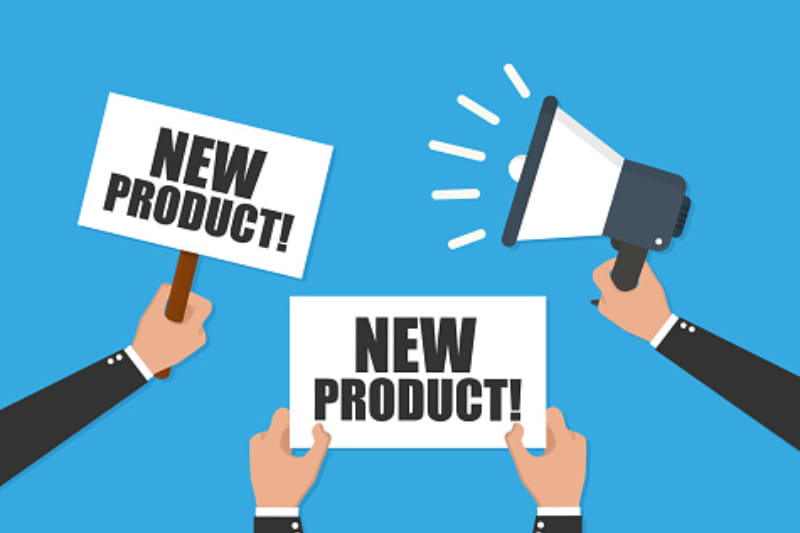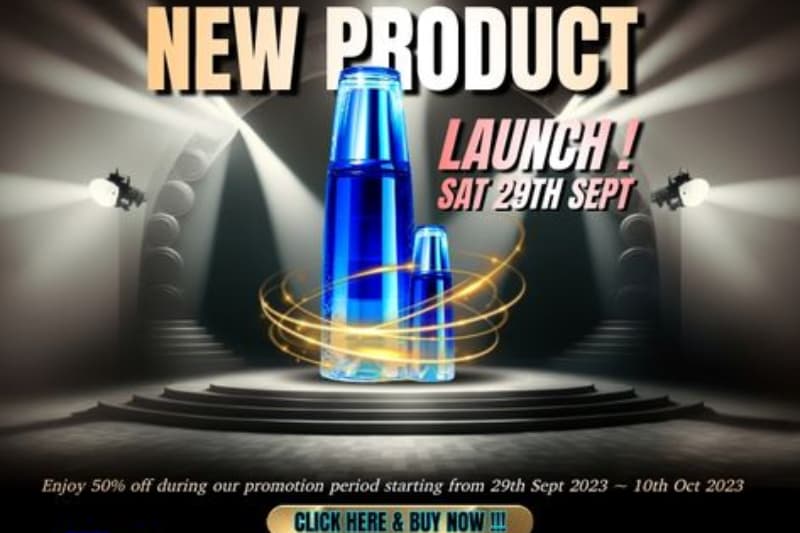A successful product launch doesn’t happen by chance - it requires detailed planning, strategic thinking, and flawless execution. This guide explores the 10 most critical factors to consider when launching a new product, from timing and pricing to advertising campaigns and flexible marketing approaches. Learn how to develop an effective product launch process that ensures your product introduction captivates your audience, stands out in the market, and delivers lasting results.
10 Essential Things to Know When Launching a New Product
Every detail - from the perfect launch date to the subtleties of pricing - plays a role in creating a lasting impact in the market. This section delves into the essential considerations to help you achieve a seamless and effective product launch.
Timing
Timing is a cornerstone of a successful launch. Choosing the right moment to introduce your product can determine its reception and overall impact. Several factors influence timing:
-
Market Trends: Consider the ebb and flow of market demand. For instance, launching eco-friendly products during Earth Day celebrations or releasing gadgets before the holiday shopping season can align your offering with current customer interests.
-
Customer Behavior: Seasonal buying habits can be pivotal. Think of how fitness products gain traction in January, while luxury items sell well during festive periods.
-
Internal Preparedness: Beyond external timing, ensure your internal operations are ready to handle the launch. This includes inventory management, staff training, and customer service. Even with the perfect product, a poorly timed launch can falter if execution falls short.
Ultimately, good timing builds momentum and creates an environment ripe for customer interest and engagement.

Pricing
Pricing is more than just a number - it’s a strategic decision that reflects the value of your product while balancing customer expectations and market conditions. Here’s what to consider:
-
Value-Based Pricing: Ensure that your pricing communicates the unique benefits your product offers. Highlight what makes it stand out, whether it’s quality, innovation, or exclusivity.
-
Competitor Benchmarking: Study the pricing landscape of similar products. Are you positioning it as a premium choice or offering a cost-effective alternative? Come up with at least two features to make a comparison in a positioning map, thereby finding the suitable tactics for the product launch process
-
Introductory Deals: Consider launching with early-bird discounts, limited-time offers, or bundled packages. These tactics can attract initial customers and generate buzz.
A well-thought-out pricing strategy ensures your product feels worth the investment, fostering long-term customer loyalty.
Packaging
Packaging serves as your product’s first impression - it’s not just functional but also a marketing tool. Effective packaging should:
-
Attract Attention: Use vibrant designs, bold colors, or unique shapes that make your product visually appealing. Catching a customer’s eye on a shelf or website can be the difference between a sale and a pass.
-
Convey Your Brand’s Values: Eco-friendly or premium materials can communicate your brand’s commitment to sustainability or luxury.
-
Be Functional: Beyond aesthetics, packaging must ensure the product remains intact during shipping and handling.
The right packaging speaks volumes about your product’s quality and your brand’s personality, influencing purchase decisions.
Product Name
Your product name is often the first point of contact with potential buyers. A great name does more than describe - it captures the essence of the product and sparks curiosity.
-
Memorability: Choose a name that’s easy to recall and pronounce. Short, catchy names often stick in people’s minds better.
-
Relevance: Ensure the name reflects your product’s purpose, benefits, or unique features.
-
Uniqueness: Avoid names that sound too similar to competitors to prevent brand confusion.
A strong product name can generate excitement and make your offering more relatable and recognizable.
Advertising Campaign
An advertising campaign is the fuel for your product launch, driving awareness and engagement. Focus on:
-
Audience Targeting: Understand your ideal customers’ demographics, preferences, and online habits to craft campaigns that resonate.
-
Platform Selection: Social media, email marketing, influencer collaborations, and paid ads are powerful channels to promote your launch.
-
Storytelling: Use stories to create emotional connections. Highlight the problem your product solves or the lifestyle it enhances.
A dynamic advertising campaign not only generates pre-launch excitement but also establishes a connection with your audience.

Market Research
Market research is the backbone of a successful product launch, helping you align your offering with customer needs and preferences. Key aspects include:
-
Understanding Your Audience: Use market segmentation to dive deep into customer demographics, pain points, and buying behaviors to tailor your product and messaging.
-
Analyzing Competitors: Identify gaps in competitors’ offerings that your product can fill.
-
Testing Concepts: Use focus groups or surveys to validate ideas before launching.
Comprehensive research ensures you launch a product that resonates with your target market, increasing the likelihood of success.
Monitor Competition
Keeping tabs on competitors provides valuable insights into industry trends and customer expectations.
-
Competitor Analysis: Study their launches - what worked, what didn’t, and what you can do better.
-
Differentiation Opportunities: Highlight what sets your product apart, whether it’s superior features, price points, or innovative benefits.
-
Market Dynamics: Stay alert to shifts in customer behavior or emerging trends to maintain your competitive edge.
Staying informed about competitors helps you position your product strategically in the market.
Product Testing
Launching without testing is like flying blind. Testing ensures your product meets expectations and functions as promised.
-
User Testing: Let real users interact with your product to uncover usability issues or areas for improvement.
-
Quality Assurance: Ensure your product is durable, reliable, and performs consistently under various conditions.
-
Feedback Loops: Use beta tests to gather actionable insights for refinement before the official launch.
Testing builds trust, ensuring that your customers receive a product that delivers value and satisfaction.
Product Improvement Evaluation
After the initial launch, the work doesn’t stop. Evaluation and improvement are ongoing processes:
-
Customer Feedback: Monitor reviews, comments, and support queries to identify areas needing attention.
-
Usage Data: Analyze metrics like engagement, usage patterns, and churn rates to inform updates or feature enhancements.
-
Market Trends: Stay adaptable to shifts in market dynamics, ensuring your product remains relevant.
Continual improvement strengthens your product’s position and ensures long-term success.
Flexible Marketing Approach
A rigid product launch marketing plan can falter in a dynamic market. Flexibility allows you to:
-
Adapt Strategies: If a campaign isn’t yielding results, pivot to new tactics without losing momentum.
-
Experiment and Learn: Test various content types, platforms, and formats to optimize your approach.
-
Respond to Feedback: Listen to your audience and tweak messaging or offerings to align with their preferences.
A flexible approach ensures your marketing remains impactful and relevant, regardless of challenges or unexpected shifts.
By addressing these critical factors, you can create a comprehensive and well-executed launching plan that paves the way for a successful product launch.

Basic Product Launch Process
What we need to think about for product launching needs to involve a careful process. A successful product launch doesn’t just happen; it’s the result of a carefully designed process that ensures every detail is addressed and every opportunity is maximized. Below, we explore the essential stages of a robust product launch process, emphasizing what you need to think about to guarantee a seamless rollout.
Planning
The planning phase lays the groundwork for everything that follows. It’s not just about coming up with ideas; it’s about turning those ideas into actionable strategies. Here’s what this stage entails:
-
Defining Goals: Begin by identifying clear objectives for the launch. Are you aiming to generate a specific number of sales, capture market share, or build brand awareness? Concrete goals provide direction and measurable outcomes.
-
Building a Launch Team: Assemble a cross-functional team with representatives from marketing, sales, product development, and customer support. Each department plays a critical role in the launch’s success.
-
Creating a Timeline: Develop a detailed timeline that outlines every step of the process, from pre-launch promotions to post-launch analysis. A well-organized timeline keeps the team aligned and ensures no task is overlooked.
-
Risk Mitigation: Anticipate potential challenges and create contingency plans. This might include supply chain disruptions, negative feedback, or unexpected competition.
This phase is your opportunity to think through every detail and set your launch up for success.
Launch Preparation
Once the planning is complete, it’s time to put the pieces together. The preparation phase is where strategies become tangible:
-
Product Testing: Before you launch a product, ensure it meets quality standards through rigorous testing. Beta testing with a small group of users can provide valuable feedback and help identify potential issues.
-
Marketing Materials: Prepare promotional content, such as social media posts, email campaigns, advertisements, and press releases. High-quality visuals and persuasive copy are essential to make an impact.
-
Customer Support Training: Equip your customer support team with the knowledge and tools they need to address inquiries or concerns. A well-prepared team can turn potential issues into opportunities to build trust with customers.
-
Supply Chain Readiness: Ensure that inventory levels, distribution channels, and logistics are in place to meet demand without delays.
Launch preparation is about ensuring that all systems are ready before the big day.

Launch Execution
The execution phase is when all your hard work comes to life. This is the moment to introduce your product to the world:
-
Marketing Rollout: Begin executing your promotional campaigns across the selected platforms. Use countdowns, teasers, and live events to build excitement.
-
Engage with Your Audience: Respond to comments, questions, and feedback in real-time. Customer interaction during the launch can foster a sense of community and excitement.
-
Event Hosting: If applicable, host a product launch event to showcase your product and engage directly with customers, influencers, and media. This could be an in-person event or a virtual webinar.
-
Monitor and Adjust: Track performance metrics such as website traffic, social media engagement, and sales. If certain strategies aren’t yielding results, make adjustments promptly.
The execution phase is fast-paced and requires constant attention, but it’s also the most rewarding part of the process.
Post-Launch Analysis
After the initial excitement subsides, it’s time to take a step back and evaluate the results of your launch. This stage is critical for understanding what worked and what didn’t:
-
Performance Metrics: Analyze key data points such as revenue, conversion rates, and customer retention. Identify patterns and trends to measure the effectiveness of your strategies.
-
Customer Feedback: Gather input from customers to learn about their experiences with the product. Pay attention to both positive and negative reviews to identify areas for improvement.
-
Team Debrief: Hold a post-mortem meeting with your team to discuss successes, challenges, and lessons learned. Use these insights to refine future launch strategies.
This phase provides the knowledge you need to improve not only the product but also your overall approach to launching products.
Continuous Optimization
Launching a product is not a one-and-done event. Continuous optimization ensures that your product remains relevant and competitive:
-
Iterative Improvements: Use feedback from customers and market data to refine your product over time. This could involve adding new features, addressing usability issues, or updating packaging.
-
Marketing Adjustments: Continue to optimize your marketing strategies based on performance metrics. Experiment with new messaging, campaigns, and channels to reach a broader audience.
-
Customer Engagement: Stay connected with your customers through follow-up emails, loyalty programs, or surveys. Building long-term relationships increases customer lifetime value.
Continuous optimization transforms your product into a lasting success rather than a fleeting moment in the spotlight.

Preparation for the Next Launch
Each product launch provides a foundation for the next one. Use the insights gained from this experience to enhance future efforts:
-
Develop a Scalable Process: Create a repeatable framework that can be adapted for future launches. This saves time and ensures consistency.
-
Leverage Existing Customers: Use satisfied customers as advocates for your next product. Positive reviews and word-of-mouth referrals can generate significant momentum.
-
Innovate with Confidence: The lessons learned from this launch provide the confidence to take calculated risks and explore new opportunities.
Preparing for the next launch ensures that your business remains innovative and forward-thinking.
By following these stages of the product launch process, you can turn a simple product introduction into a powerful market debut, setting the stage for long-term success.
Conclusion
So, what do we need to think about for product launching, as it is a critical milestone in your business journey? By addressing the key considerations outlined in this guide - timing, pricing, market research, and more - you can ensure a successful new product introduction. Following a structured product launch process helps you avoid common pitfalls and maximize your product’s potential.
At VietnamEvent, we specialize in offering product launch event services that captivate audiences and elevate brands. Whether you’re launching a product for the first time or introducing a new addition to your lineup, our expertise ensures your event leaves a lasting impression. Let us help you turn your vision into reality!
---------------------------------------------------------------------------
Contact information:
Vietnam Event | Local Brand - Global Expert
Hotline/Mobile/Whatsapp: (+84) 913 929 182 - (+84) 918 640 988
Email: annie@vietnamevent.com
-
29 Doan Thi Diem str., Dong Da dist., Hanoi
-
217 Tran Phu str., Hai Chau dist., Danang
-
5 Hoa Cau str., Phu Nhuan dist., Ho Chi Minh City
-
Others: Singapore


